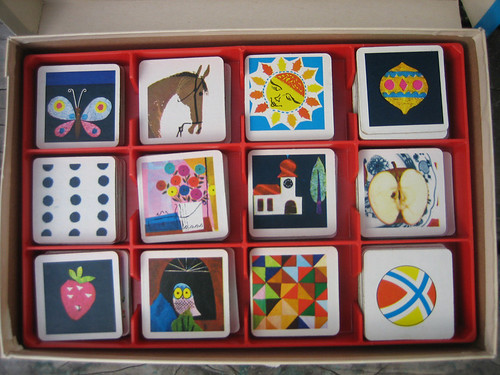If anyone ever tries to tell you that color is easy, be skeptical.
The very idea of color (color is, after all, just an idea...or perception) is highly complex. Since the beginning of time color has been a subject so integral to our understanding of life itself. Some of the greatest minds in history have devoted years, decades - even lifetimes - trying to make complete sense of how color works. Thanks to this devotion, and modern technology, we have a pretty good understanding of color from a scientific perspective. We know about rods and cones, additive versus subtractive, and the whole prism thing. Ok, well "we", meaning me, know
some of it. The point is, the information and training is available if I ever wanted to become a color scientist. Probably not going to happen in this lifetime, but never say never. And although the training is available (you can get a Master's in Color Science from
Rochester Institute of Technology) I highly doubt it is an "easy" subject to major in, as the program encompasses physics, chemistry, physiology, statistics, computer science
and psychology.
Ahhh...color psychology. We've all heard about this. Personally, I think color psychology could be a major all on its on, because that's really where things start to get complicated. And because it gets so complicated it is an immediate target for what I consider one of the most dangerous words in the English language: "Easy."
Dangerous? Isn't that a bit harsh?
No, I don't think so...and let me tell you why.
"Easy" leads to magic recipes which in turn lead to color myths.
We've heard that red makes you hungry, and that blue is an appetite suppresent. So if you want to lose weight, just paint your kitchen blue. Easy enough, right? Zippo-zammo - you've solved two of life's biggest problems with one easy stroke of a brush. You know what color to paint your kitchen AND you're gonna drop a few pounds. Where did this idea come from? Some studies were done a number of years ago that, like a bad game of telephone, become diluted and misinterpreted over time. The information was then hijacked by "color experts" in an effort to prove their own worth as professionals. That's my story and I'm sticking to it.
"Easy" also leads to arbitrary color "rules."
Ever heard something like "All trim should be painted white" or "Never paint a small room in a dark color"? These "rules" attempt to simplify color and neglect to take into account the ever-evolving and highly unique set of circumstances, preferences and personas involved in each color project. Creating color "rules" certainly makes for easy-to-follow advice and looks great as a quote in a magazine. But, in my opinion, it is completely irresponsible for any color professional to design, sell, or subscribe to any of it.
And why is all of this bad? Well, for a few reasons. First, simplifying color doesn't lead to well-designed, well-functioning spaces. Color does, in fact, play an extremely important role in the function of our environments, and following "easy" color advice can often lead to bad design. Bad design can make us feel icky in our spaces. Imagine telling someone who despises blue that she needs to paint her kitchen blue simply because she's trying to lose weight? Every time she goes in her kitchen she's going to hate it. Maybe she'll lose weight, but it might be because she can't stand being in the space long enough to grab some food. Or, maybe that space will stress her out and she'll consume MORE food because she's an emotional eater. Sound ridiculous? Sure - but no more ridiculous than the original color myth.
Making color "easy" also can create a sense of fear. What happens if we don't adhere to these color "rules"? Will we ruin our baby's development if we paint the wrong color in the nursery? Will the value of our home decrease if we don't have all the trim painted in Decorator's White? Funny how "easy" doesn't seem so easy anymore. Although the "rules" are set up to guide us, they actually confine us, often times making us too frightened to appreciate and explore color by our own free will.
Ultimately, "easy" deprives us of a deep sense of satisfaction.
You still with me?
When we try to turn something into "easy", we immediately take away the prospect of hard work and reward. If something is deemed easy, we also have expectations that it won't take much time or energy.What's more rewarding - walking to the end of the street or running 10 miles? Running that 10 miles is probably going to be hard work (unless you're Carl Lewis or something), but you will no doubt feel an exhilarating sense of accomplishment when the run is completed.
Setting up this idea that color is "easy" takes away our ability to truly appreciate color and all it has to offer. Color is hard work. But it is in the hard work that we reap the sweetest reward. I believe that we are all capable of learning color. This idea that it's supposed to be easy is outdated and dangerous. It leaves people afraid and feeling inadequate...and leads to thoughtless designs. It's time to embrace the idea that color is NOT easy. Never was, never has been. And as soon as we stop trying to make it easy and give it the thought that it deserves, we will be able to harness its full power and beauty.
If you need help harnessing the power and beauty of color please call me at 650.867.3896, or shoot me an email at kelly@artestyling.com to discuss your project.




































































